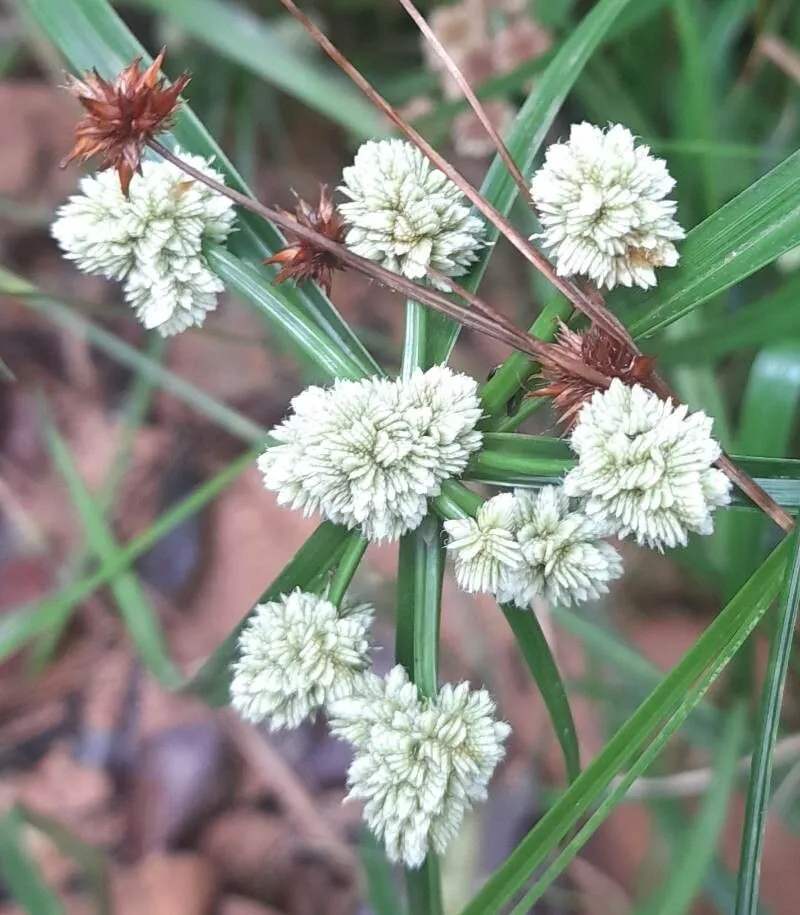
Author: (L.) Retz.
Bibliography: Observ. Bot. 4: 11 (1786)
Year: 1786
Status: accepted
Rank: species
Genus: Cyperus
Vegetable: Unknown
Observations: Mexico to Trop. America
Cyperus luzulae, commonly known as the Rush-like flatsedge, is a noteworthy species within the diverse family of Cyperaceae. The taxonomic classification of this plant was first detailed by Carl Linnaeus and later refined by Anders Jahan Retzius in the publication “Observationes Botanicae,” volume 4, page 11, in the year 1786, marking its recognition and formal description in the scientific community.
This perennial sedge thrives in a range stretching from Mexico down to the tropical regions of the Americas. Its adaptability to various climates within this extensive geographic span underscores its ecological versatility. Characterized by its rush-like appearance, the Rush-like flatsedge adds a unique aesthetic to the landscapes it inhabits, often found in wetland areas or alongside bodies of water where it can optimally absorb moisture.
The plant’s structural attributes and growth habits are indicative of its evolutionary adaptations to its preferred humid environments. It typically features slender, grass-like stems and a clumping growth pattern that enables it to stabilize soil and prevent erosion in its native habitats. This quality makes Cyperus luzulae not only vital to its ecosystem but also of potential interest for ecological restoration projects.
Understanding Cyperus luzulae also involves appreciating its role within the broader family of Cyperaceae, a family known for its structural resemblance to grasses but distinguished by unique reproductive and vegetative characteristics. As research continues to explore the diverse members of the Cyperaceae family, the Rush-like flatsedge remains a subject of interest for botanists and ecologists who seek to preserve and study the rich biodiversity of tropical America.
In essence, Cyperus luzulae stands as a testament to the intricate balance and beauty of wetland ecosystems, reflecting the botanical diversity and ecological significance of the environments it inhabits. Its rush-like form not only adds to its aesthetic appeal but also highlights the intricate adaptations plants undergo to thrive in their specific niches.
En: Rush-like flatsedge
Taken Sep 15, 2015 by Nelson Zamora Villalobos (cc-by-nc)
Taken Sep 15, 2015 by Nelson Zamora Villalobos (cc-by-nc)
Taken Oct 14, 2021 by velez Luis (cc-by-sa)
Taken Jul 4, 2022 by Trap Hers (cc-by-sa)
Taken Jul 4, 2022 by Trap Hers (cc-by-sa)
Taken May 24, 2012 by Nelson Zamora Villalobos (cc-by-nc)
Taken May 24, 2012 by Nelson Zamora Villalobos (cc-by-nc)
Taken Sep 15, 2015 by Nelson Zamora Villalobos (cc-by-nc)
Taken Sep 15, 2015 by Nelson Zamora Villalobos (cc-by-nc)
Taken Sep 15, 2015 by Nelson Zamora Villalobos (cc-by-nc)
© copyright of the Board of Trustees of the Royal Botanic Gardens, Kew.
© copyright of the Board of Trustees of the Royal Botanic Gardens, Kew.
© copyright of the Board of Trustees of the Royal Botanic Gardens, Kew.
Family: Myrtaceae Author: (F.Muell.) K.D.Hill & L.A.S.Johnson Bibliography: Telopea 6: 402 (1995) Year: 1995 Status:…
Family: Rubiaceae Author: Pierre ex A.Froehner Bibliography: Notizbl. Bot. Gart. Berlin-Dahlem 1: 237 (1897) Year:…
Family: Sapindaceae Author: Koidz. Bibliography: J. Coll. Sci. Imp. Univ. Tokyo 32(1): 38 (1911) Year:…
Family: Asteraceae Author: A.Gray Bibliography: Pacif. Railr. Rep.: 107 (1857) Year: 1857 Status: accepted Rank:…
Family: Fabaceae Author: Medik. Bibliography: Vorles. Churpfälz. Phys.-Ökon. Ges. 2: 398 (1787) Year: 1787 Status:…
Family: Aspleniaceae Author: (Cav.) Alston Bibliography: Bull. Misc. Inform. Kew 1932: 309 (1932) Year: 1932…